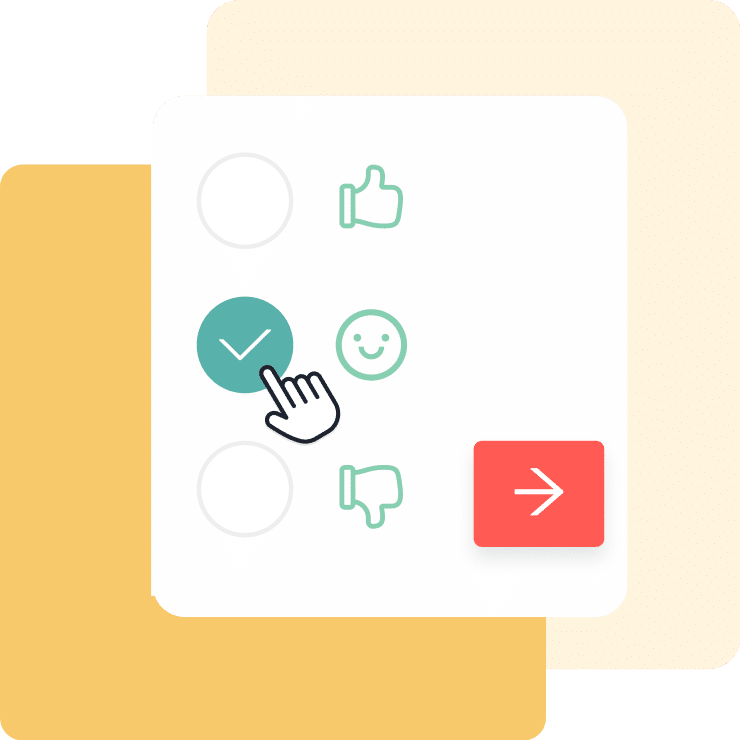This free solution has been built based on the guidelines of the World Health Organization and intends to respect the Data Collection and Privacy guidelines. Our only interest is to help stop the spread.
A safer environment built on individual responsibility.
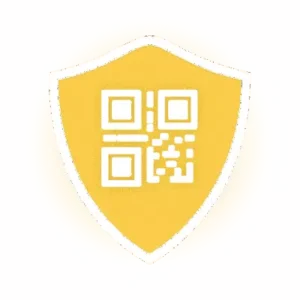
Visitors safety
Visitors will feel safe to enjoy at your venue, knowing that there’s a quick self check-in at the door of your COVID-19 FREE ZONE.

Healthcare
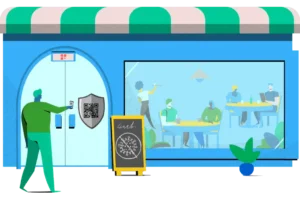
Business owners
Health check-in COVID QR code made easy
Know who and when checked in at your venue. Avoid the coronavirus spread.
Two options
QRcodeKit.com gives you two options to choose from COVID QR code:
COVID-tracing
form QR code
1. To collect contact information so you can immediately alert anyone who may have been in your premises at the same time as a confirmed COVID-19 case.

With this QR code and form, visitors provide the following information:
You can choose to automatically delete the information visitors provide you for either type of form.
COVID-screening
QR code
1. To collect contact information so you can immediately alert anyone who may have been in your premises at the same time as a confirmed COVID-19 case.
2. To have visitors assess themselves for potential COVID-19 symptoms or exposure.
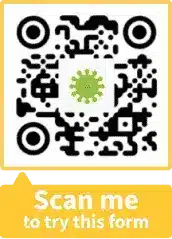
With this QR code and form, visitors provide the following information:
-
1. Everything looks good. Please show this screen to enter.
2. We have some additional questions. Please speak with our safety officer.
Regardless of which screen they land on, you make the final decision about entry.
What happens if somebody that visited my venue is infected?
If somebody that checked in at your venue lets you know that it’s infected with COVID-19, you will be able to download a report from your QRcodeKit.com profile with all the people that might have been in contact with that person.
Health QR code contactless form: Use cases
Getting used to “the new normal”. These use cases will be implemented at restaurants, supermarkets, health facilities, stores, hotels, and malls, among others. It will start being applied in facilities, to receive visitors securely, in a health-wise context.
Self-declaration form
Health declaration form
- 1. Place your COVID QR Code form in visible areas.
2. Have your visitors scan and fill out the contact tracing self check-in form
3. Grant access after the form has been completed
Contact tracing
Contact tracing
-
1. Allow your visitors to scan the COVID QR code form by placing it in a visible area.
2. If a positive case is detected, inform visitors who visited your premises the same day, that might be at risk.
3. Prevent mass transmissions.
Risk evaluation form
Risk evaluation form
-
1. Display QR Code at visible areas
2. Have concerned employees and visitors scan it
3. Suggest solutions based on the WHO standards
Visits check-in code
Visits check-in code
-
1. Place the QR code on entries or in your touchscreens.
2. Visitors scan the QR code to fill in the self check-in form.
3. Grant access.
FAQ about COVID QR codes
Can I modify the form questions?
Not at the moment. The form has been updated to request Full name, Phone, and Email, to optimize contact tracing. It also prints the date and time of the visit. Also, as a major update, you can add additional custom fields to the form.
Can I modify the QR code design?
Yes, you can change the design right from your control panel, once you’re logged in. You can log in here.
Can I put my logo on the form?
Yes, you can insert your logo and add a title to your form.
How many Contact tracing QR code forms can I create per account?
You can create one COVID-19 contactless form per account. To manage more forms under your account, please consider upgrading to Premium.
Is there a limit on the replies I can receive?
If you expect to have more than 100 monthly responses, please upgrade to Premium.
How many Contact tracing forms can I create within my free account?
You’re free to print as many copies of the dynamic QR code form as you require, so there’s no limit on the copies. If you happen to need multiple different QR code forms, please upgrade your account.
Are you keeping a database of the replies?
How is my data used and stored?
We take Privacy and Data Collection laws seriously. We will not monetize nor share the information provided in your forms by your visitors. The system will store each reply, and flush it after 30 days if not required. It’s your decision to share it with the local authorities.
You can always request to completely delete the form you’ve created and to remove all responses by sending us an email to support@qrcodekit.com
Help your visitors recover their trust while preventing the spread of coronavirus
What is COVID-19?
COVID-19 is an infectious and sometimes fatal disease caused by the coronavirus strain SARS-CoV2. Because it is new to humans, our bodies have a difficult time dealing with it and thus it has turned into a global pandemic.
The disease was first detected in Wuhan, China, back in December 2019.

Most common ways to contract COVID-19
It can be transmitted if you touch a surface that has the virus on it and then touch your nose, mouth or eyes. That is why it is important to not touch your face unless you have washed your hands for at least 20 seconds with soap and water before and to disinfect surfaces regularly.
Safety measures to get back to work
With restaurants closed, revenue falling 60% in the fashion industry, and up to 85% fewer sales in luxury products, some governments are already comparing the COVID recession to World War 2.
The good news is, China has restarted its economy already, after 59 days of strict lockdown. This is a quarantine model the rest of the world, guided by the WHO (World Health Organization), is aiming to follow.
As the world lockdown eases, new rules are being applied to keep everyone safe. It will be essential to control access to enclosed spaces and to prevent the spread as people go back to work.
Contactless solutions are gaining popularity in many industries so both employees and visitors can avoid unnecessary contact with surfaces.
For starters, social distancing is (and will be) a must from now on, along with a minimum health self-assessment before entering into places with crowds.
Some businesses are utilizing Infrared thermometers (200 USD, give or take) to measure visitors’ temperatures at the entrance of their facilities. Anyone with a high temperature is flagged and refused entry.
QR codes are another alternative that is accessible to everyone with a smartphone. Visitors will access a contactless self-declaration form with a few questions about their health status, like the one we are offering for free here. These forms ask people a few questions about symptoms and potential contact with positive COVID cases.
Companies are already changing their value proposition.
QR code forms are helping stop the spread of COVID during and post quarantine. The “COVID QR code,” or “Opt-in health form” aims to provide an additional layer of safety before visitors/employees access the venue.
While companies are doing what they can to help stem the spread of COVID-19 and healthcare authorities look for a vaccine, general uncertainty has emerged with events suspended or happening without the usual crowds of people and numerous jobs lost as the world’s economies slow down.
This is a challenging time in particular for people that can’t perform their work remotely, like many healthcare professionals, some restaurant staff, and physical retailers in general.
During this time of trying to go back to normal, companies and institutions have to pay special attention to directives from the CDC (Centers for Disease Control and Prevention) to follow the best safety practices possible.
Contactless health check-ups at entries will ensure customers, employees, and essential providers are safe inside your facility, helping to flatten the curve and reduce the spread.
QR codes for healthcare establishments
"Contact tracing is an essential step, and this is why similar initiatives are being adopted in places around the world."
tweeted Xian-Sheng. Tweet
More and more countries are starting to implement QR codes in their fight against the coronavirus.
"Technology now plays a critical role in containing the pandemic."
Xian-Sheng Hua, a health AI expert at China's e-commerce giant Alibaba, told CNN. Tweet
QR codes as a close contact detector
This health control system is hosted within the popular Chinese apps, Alipay and WeChat.
These two apps are used by 99.9% of Chinese people. To compare with western countries, that is like if you put Facebook, WhatsApp, and Google users together. The Chinese government asked all its citizens to fill a form within the apps, designating the person one of 3 colored QR codes.
China’s QR codes; different colors and meanings
GREEN
QR CODE
GREEN QR CODE
YELLOW
QR CODE
YELLOW QR CODE
RED
QR CODE
RED QR CODE
- Full name,
- ID/passport
- Phone number
- Travel history
- Contact with confirmed COVID-19 cases in the last 14 days
- Check for symptoms they could be experiencing
The system will automatically verify the information, assigning one of the 3 colored QR codes.
If a new Coronavirus case is detected, the healthcare system can quickly track that person’s movements in public places, identifying people that might have been in contact with the individual.
Hospitals have benefited the most with the color-based contactless QR code. This health tracking system is saving a lot of time for health professionals that, before the implementation of the check-in QR code, had to go through an extensive interview with visitors before letting them access facilities. At the same time, the self-declaration questionnaire allows an early screening, eliminating waiting times and long queues to access the hospital.
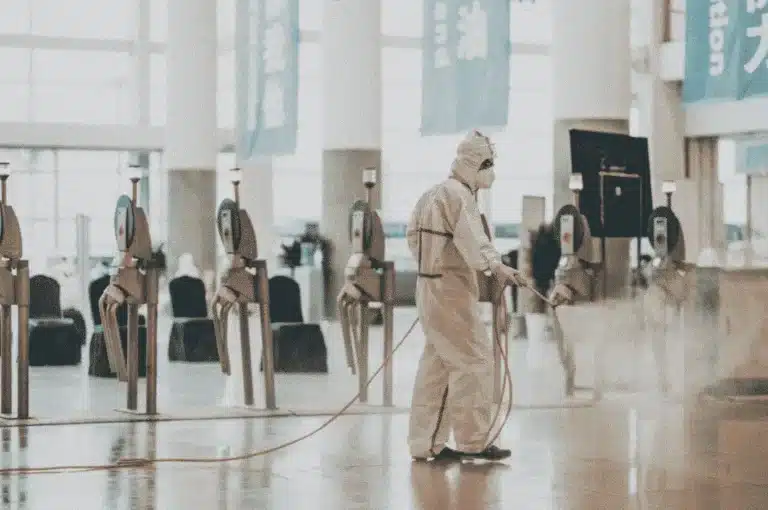
Although some patients lied when answering some of the questions to access medical facilities, it has proven useful as a first security layer. The visitor must digitally sign the self-declaration questionnaire, legally binding them. This, complemented with an infrared thermometer, makes the whole process faster and safer for everyone.
Reducing contact with physical services like touch screens and physical desks is important for preventing the coronavirus from spreading further.
Public venues can reduce the manipulation of objects by digitizing some of them, like removing physical menus from restaurants, and uploading them to a QR code. That way, customers won’t need to touch the menu.
QR codes are at the front line of fighting the coronavirus. The average scanning distance to read a QR code is 11.8 inches (30 cm) – it can be more if the QR code is big enough. On the other hand, devices with NFC (near field communication) enabled require a range of around 2 inches (5 centimeters). QR codes can be scanned from a safer distance than using NFC and are more cost-effective.
